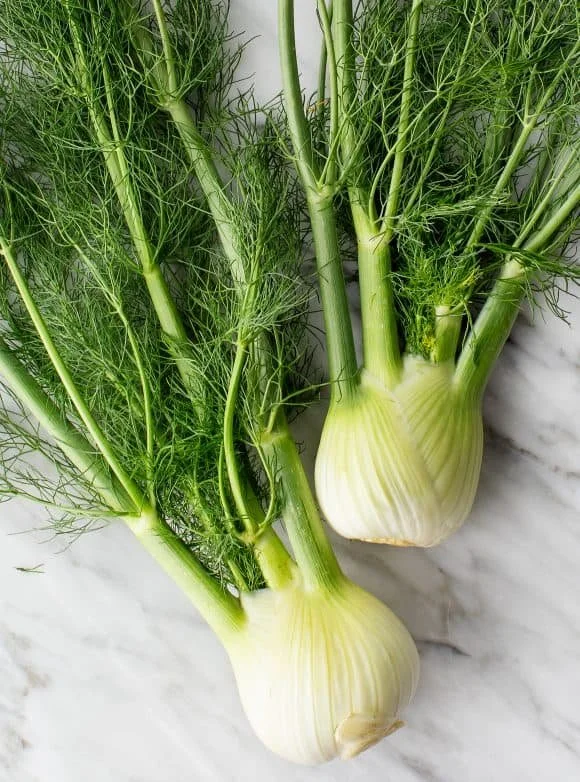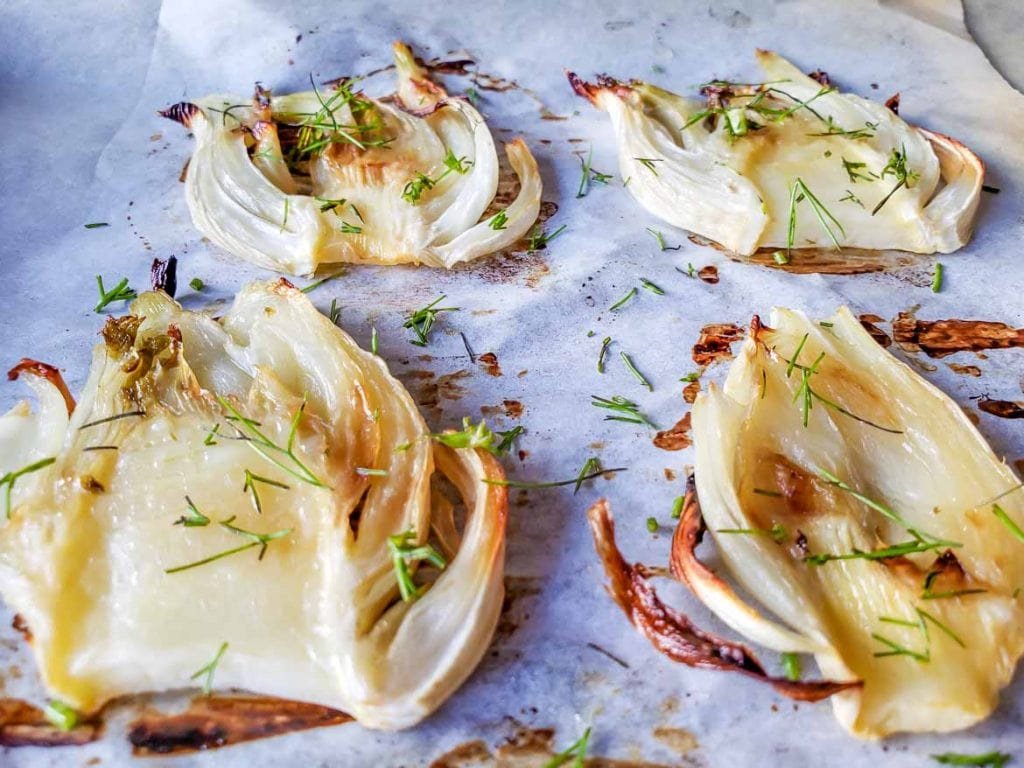 Image 1 of 2
Image 1 of 2

 Image 2 of 2
Image 2 of 2

Fennel
Fennel is a member of the carrot family, even though it is not a root vegetable. It has a very mild anise flavour that can be enhanced or sweetened depending on if it is raw or cooked. The main fennel bulb is a plant-based source of potassium, sodium, phosphorus and calcium. It is also high in essential fatty-acids and magnesium.
The Vitamin B6 and folate in fennel prevent the build-up of a compound called homocysteine by converting it into a different compound, methionine. When excessive amounts of homocysteine build up, it can damage blood vessels and lead to heart problems.
People can use fennel seeds, leaves and flowers in different ways.
Early June to late September
Fennel is a member of the carrot family, even though it is not a root vegetable. It has a very mild anise flavour that can be enhanced or sweetened depending on if it is raw or cooked. The main fennel bulb is a plant-based source of potassium, sodium, phosphorus and calcium. It is also high in essential fatty-acids and magnesium.
The Vitamin B6 and folate in fennel prevent the build-up of a compound called homocysteine by converting it into a different compound, methionine. When excessive amounts of homocysteine build up, it can damage blood vessels and lead to heart problems.
People can use fennel seeds, leaves and flowers in different ways.
Early June to late September
Fennel is a member of the carrot family, even though it is not a root vegetable. It has a very mild anise flavour that can be enhanced or sweetened depending on if it is raw or cooked. The main fennel bulb is a plant-based source of potassium, sodium, phosphorus and calcium. It is also high in essential fatty-acids and magnesium.
The Vitamin B6 and folate in fennel prevent the build-up of a compound called homocysteine by converting it into a different compound, methionine. When excessive amounts of homocysteine build up, it can damage blood vessels and lead to heart problems.
People can use fennel seeds, leaves and flowers in different ways.
Early June to late September
